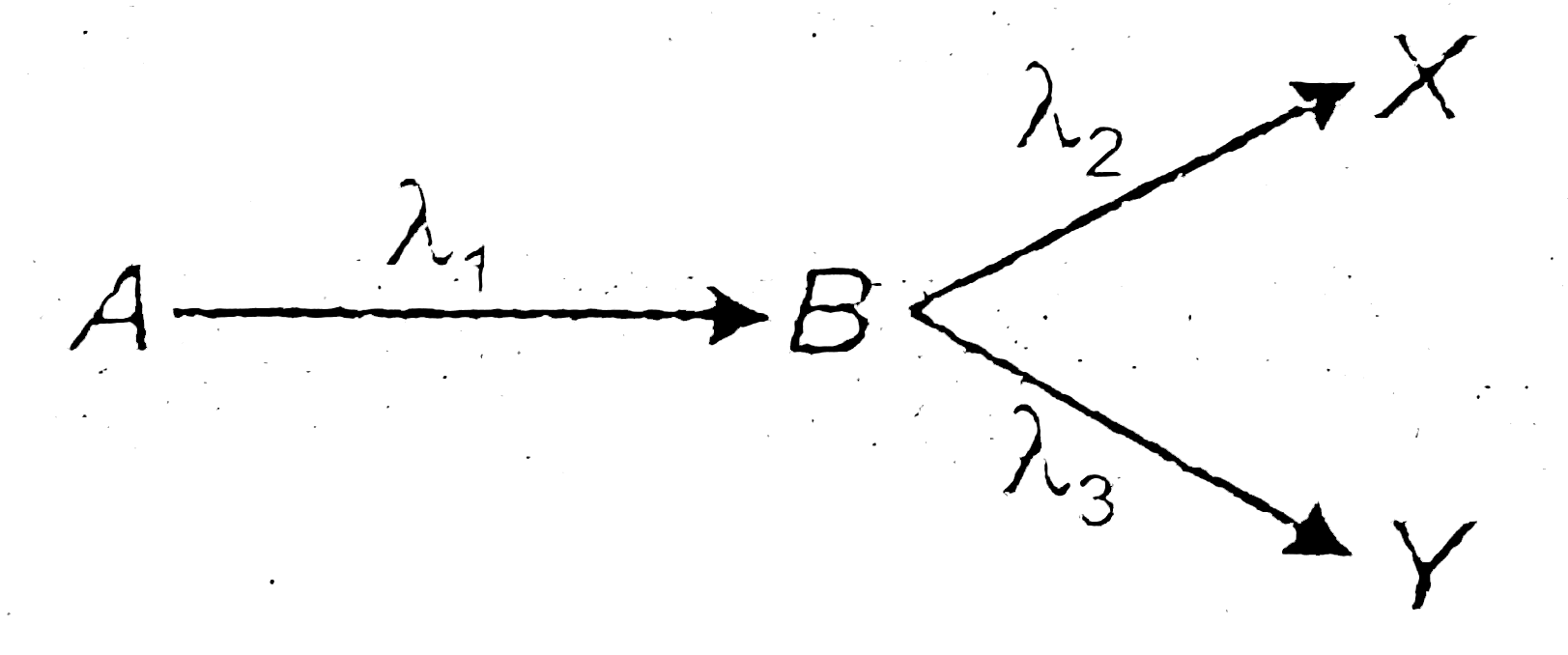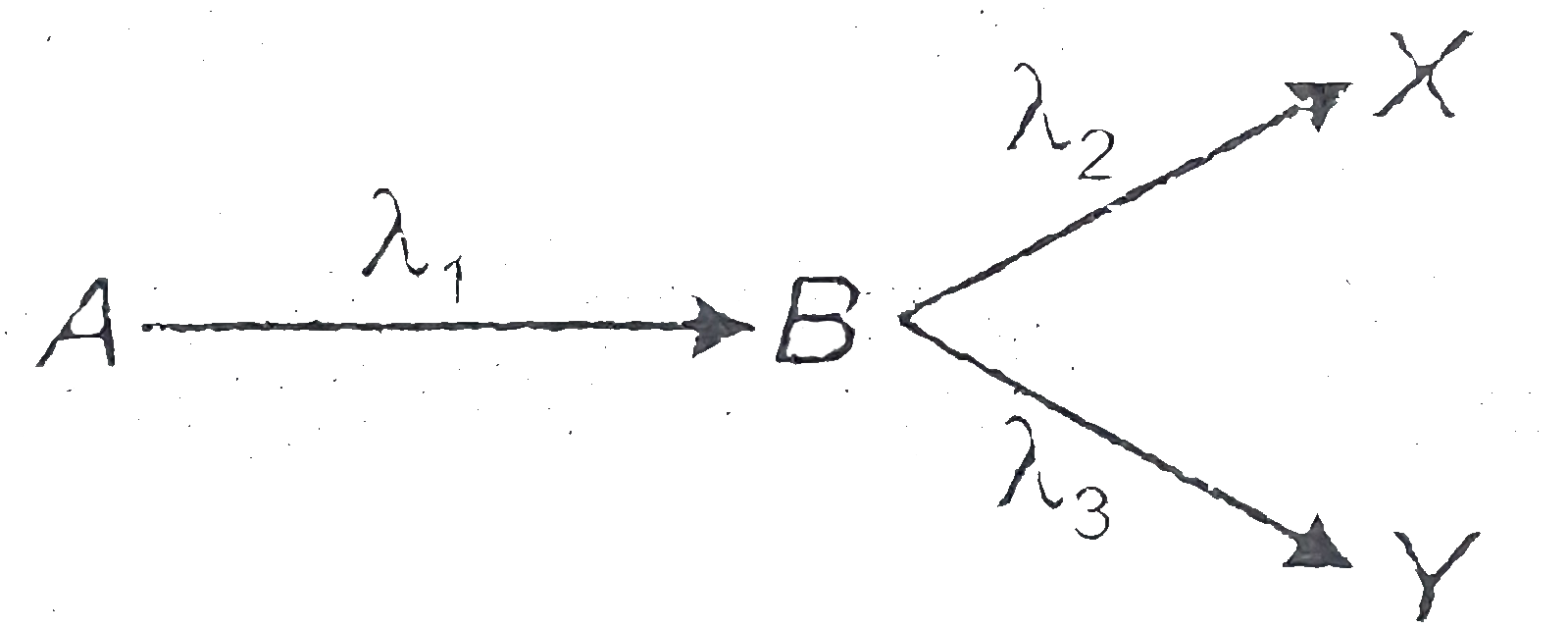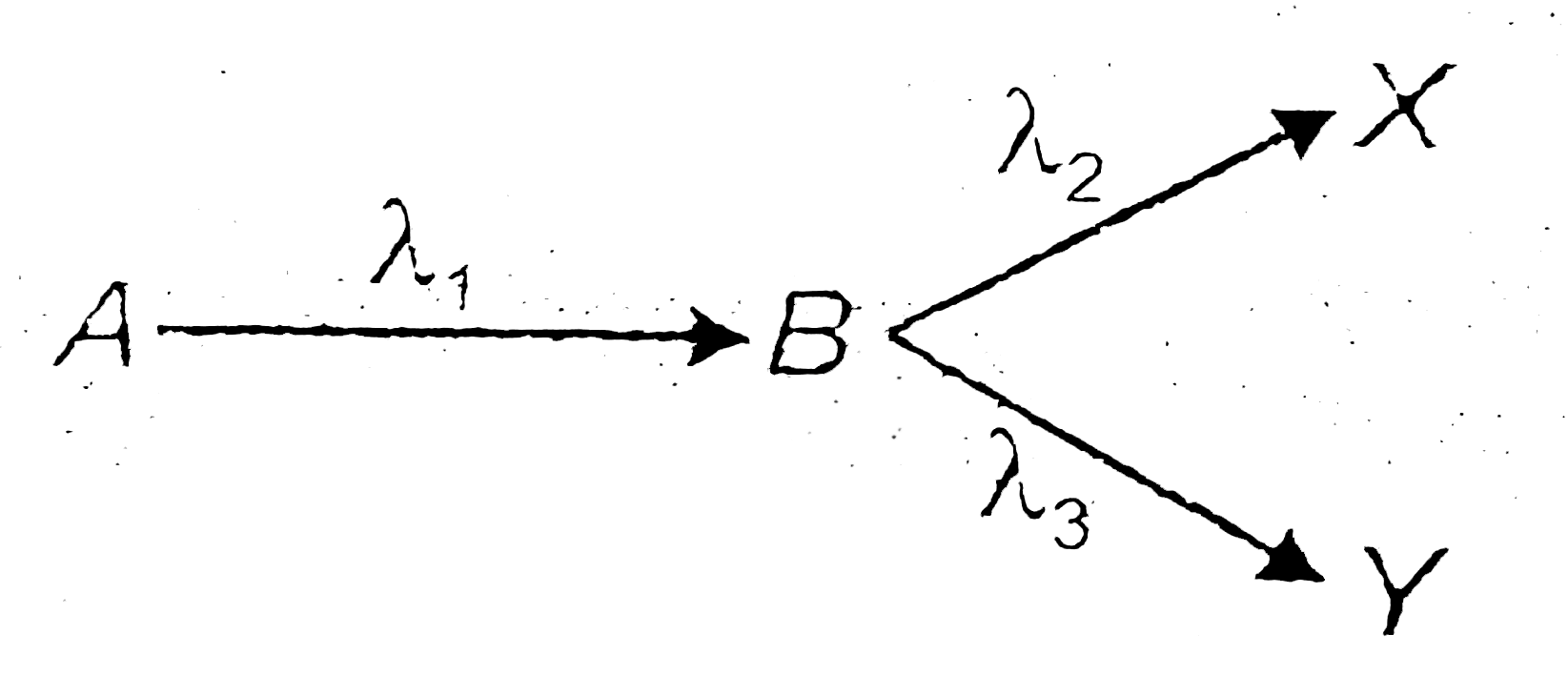Consider a nuclear decay process A→B→C(stab≤)
At a certain time, the activity of nuclei A is 'x' and the nett rate of increase of number of nuclei B is 'y' The activity of nuclei B at this instant is :
y
x−y
y−x
x
The correct Answer is:B
Step by step video, text & image solution for Consider a nuclear decay process A rarr B rarr C (stable) At a certain time, the activity of nuclei A is 'x' and the nett rate of increase of number of nuclei B is 'y' The activity of nuclei B at this instant is : by Physics experts to help you in doubts & scoring excellent marks in Class 12 exams.
Similar Questions
A radio nuclide X is produced at constant rate α. At time t=0, number of nuclei of X are zero. Find
(a) the maximum number of nuclei of X.
the number of nuclei at time t.
Decay constant of X is λ.View SolutionThe rate at which a particular decay process occurs in a radio sample, is proportional to the number of radio active nuclei present . If N is the number of radio active nuclei present at some instant, the rate of change of N is dNdt=−λN. Consider radioactive decay of A to B which may further decay either to X or to Y, λ1,λ2andλ3 are decay constants for A to B decay , B to X decay and B of Y decay respectively. if at t=0 number of nuclei of A,B , X and Y are N0,N0,zero and zero respectively

and N1,N2,N3,N4 are number of nuclei A,B , X and Y at any instant.
The number of nuclei of B will first increase then after a maximum value, it will decreases, ifView Solution
Knowledge Check
- Question 1 - Select One
A radionuclide is produced at constant rate 'q' having half life T. Find time after which activity of nuclei will be A, if initially number of nuclei were zero.
ATAqln(2)BTln(2)ln(A)qCTln(2)ln(1−Aq)DNone of these - Question 2 - Select One
The rate at which a particular decay process occurs in a radio active sample, is proportional to the number of radio active nuclei present. If N is the number of radio active nuclei present at some instant, the rate of change of N is dNdt=−λN.
_E01_161_Q01.png)
Consider radioavtive decay of A to B which may further decay, either to X or to Y, λ1,λ2 and λ3 are decay constants for A to B decay, B to X decay and B of Y decay respectively. If at t=0 number of nuclei of A, B, X and Y are N0,N0, zero and zero respectively and N1,N2,N3,N4 are number of nuclei A,B,X and Y at any intant.
At t=∞, which of the following is incorrect ?AN2=0BN3=N0λ2λ2+λ3CN4=2N0λ3λ2+λ3DN3+N4+N1+N2=2N0 - Question 3 - Select One
Half-life of radio active element A is 30 min while B is 20 min. Calculate ratio of number of nuclei decayed of A B after 60 min
A76B56C67D11
The rate at which a particular decay process occurs in a radio sample, is proportional to the number of radio active nuclei present . If N is the number of radio active nuclei present at some instant, the rate of change of N is dNdt=−λN. Consider radioactive decay of A to B which may further decay either to X or to Y, λ1,λ2andλ3 are decay constants for A to B decay , B to X decay and B of Y decay respectively. if at t=0 number of nuclei of A,B , X and Y are N0,N0,zero and zero respectively

and N1,N2,N3,N4 are number of nuclei A,B , X and Y at any instant.
Rate of accumulation of B of any instant will beView SolutionThe rate at which a particular decay process occurs in a radio sample, is proportional to the number of radio active nuclei present . If N is the number of radio active nuclei present at some instant, the rate of change of N is dNdt=−λN. Consider radioactive decay of A to B which may further decay either to X or to Y, λ1,λ2andλ3 are decay constants for A to B decay , B to X decay and B of Y decay respectively. if at t=0 number of nuclei of A,B , X and Y are N0,N0,zero and zero respectively

and N1,N2,N3,N4 are number of nuclei A,B , X and Y at any instant.
At t=∞, which of the following is incorrect ?View SolutionDraw a graph showing the variation of decay rate with number of active nuclei.
View SolutionTwo radioactive substances have half-lives T and 2T. Initially, they have equal number of nuclei. After time t=4T, the ratio of their number of nuclei is x and the ratio of their activity is y. Then,
View SolutionA certain radioactive element disintegration with a decay constant of 7.9×10−10 sec. At a given instant of time, if the activity of the sample is equal to 55.3×1011 disintegration/sec, then number of nuclei at that instant of time.
View Solution

